
The Syngnathidae is a family of fish which includes seahorses, pipefishes, and seadragons. The name is derived from Greek, σύν (syn), meaning "together", and γνάθος (gnathos), meaning "jaw". This fused jaw trait is something the entire family has in common.

Syngnathus is a genus of fish in the family Syngnathidae found in marine, brackish and sometimes fresh waters of the Atlantic, Indian and Pacific Ocean. Fossils of these species are found from the Oligocene to the Pleistocene. They are known from various localities of Greece, Italy, Germany and United States.
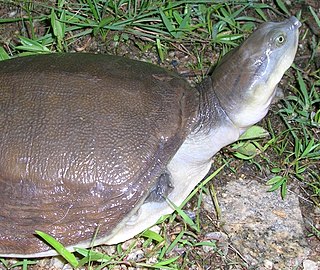
Lissemys is a genus of turtles of the family Trionychidae. The genus is endemic to southern Asia.

Stigmatopora is a genus of pipefishes native to the Indian and Pacific Oceans.

Labeo is a genus of carps in the family Cyprinidae. They are found mainly in the Old World tropics.
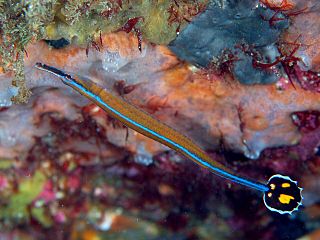
Doryrhamphus and Dunckerocampus, popularly known as flagtail pipefish, are two genera of fishes in the Syngnathidae family. They are found in warm, relatively shallow waters of the Indo-Pacific, with a single species, D. paulus, in the eastern Pacific. Most of these pipefishes are very colourful, and are fairly popular in the marine aquarium hobby despite requiring special care and not being recommended for beginners.
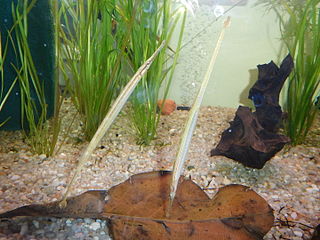
Microphis is a genus of pipefishes within the family Syngnathidae. Members of this genus are notable among the Syngnathidae for residing in mainly fresh and brackish waters. Adults breed in coastal rivers, streams, or lakes, and fertilized eggs are carried by the male pipefish in a brood pouch extending along his entire ventral surface.

Corythoichthys is a genus of pipefishes of the family Syngnathidae. All species in the genus are found in the tropical Indian and Pacific Oceans on reefs or rubble bottoms. Relationships and taxonomy within the genus are still in debate, but there may be at least 23 species.

Amoya is a genus of gobies in the family Gobiidae native to the Indian Ocean and the western Pacific Ocean.
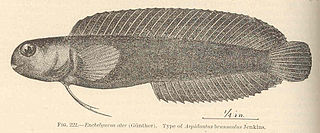
Enchelyurus is a genus of combtooth blennies found in the Pacific and Indian Oceans.
Geophis is a genus of snakes in the subfamily Dipsadinae of the family Colubridae. Species in the genus Geophis are typically referred to as Latin American earth snakes. The genus consists of over forty distinct species.

Omobranchus is a large genus of combtooth blennies found in the Pacific, Atlantic, and Indian oceans.
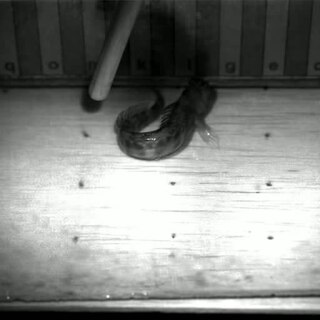
Praealticus is a genus of combtooth blennies found throughout the Pacific and Indian oceans.
Choeroichthys is a genus of pipefishes of the family Syngnathidae native to the Indian and Pacific Oceans.
Doryichthys, river pipefish, is a genus of Asian freshwater pipefishes.
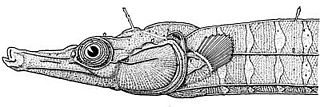
Cosmocampus is a genus of pipefishes.
Eugnathogobius is a genus of gobies native to fresh, brackish and marine waters of the Indian Ocean and the western Pacific Ocean region.

Enteromius is a genus of small to medium-sized cyprinid fish native to tropical Africa. Most species were placed in the genus Barbus.

Urocampus nanus, also known as the barbed pipefish, is a species of marine fish belonging to the family Syngnathidae. The species can be found inhabiting seagrass beds in sheltered shoreline and estuary habitats along the coasts of southern Japan and Korea. Their diet likely consists of small crustaceans. Reproduction occurs through ovoviviparity in which the males brood eggs for 11-16 days before giving live birth. Urocampus nanus is thought to be polyandrous, where multiple females compete over breeding with a single male.

















